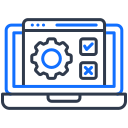Learning Design That Actually Works
Platforms stand apart by prioritizing active learning—hands-on projects, reflection prompts, and spaced practice—over passive video binges. When learners build, teach back, and iterate, concepts stick longer and confidence rises. Which active methods have helped you master tough topics?
Learning Design That Actually Works
Great courses are planned backward from real-world outcomes. Platforms with mastery thresholds, clear rubrics, and structured milestones help you progress without gaps. It feels slower at first, then suddenly faster, because you are not constantly re-learning basics.







